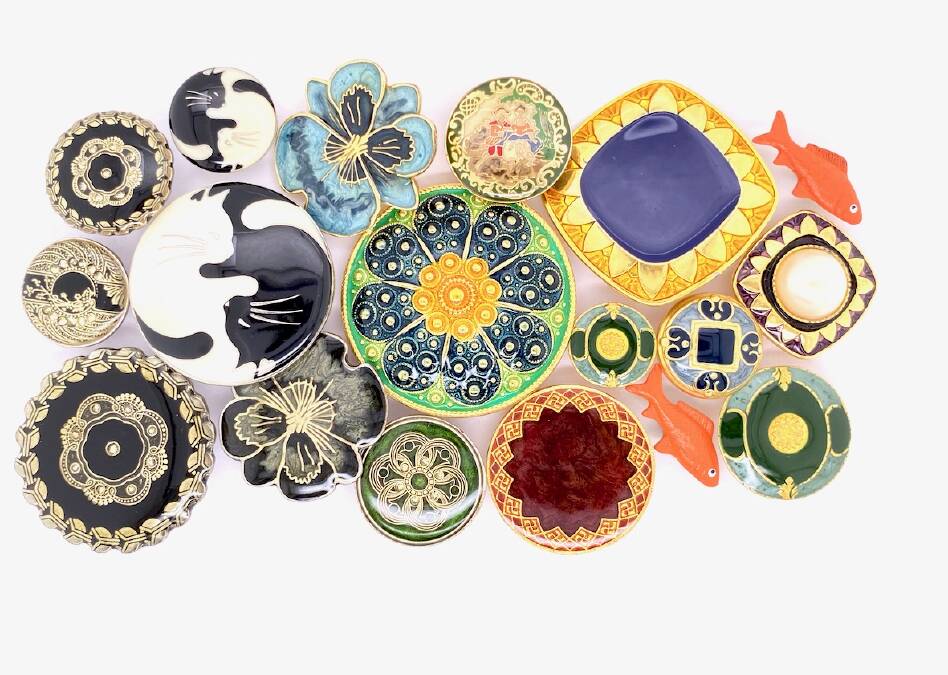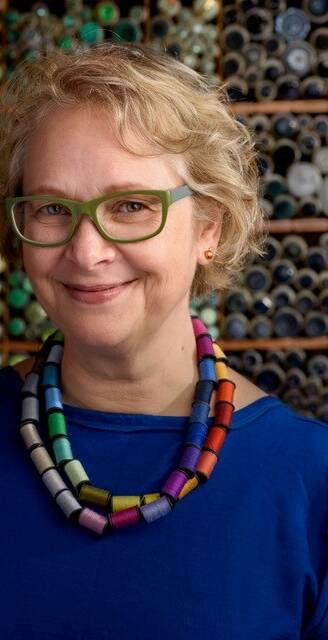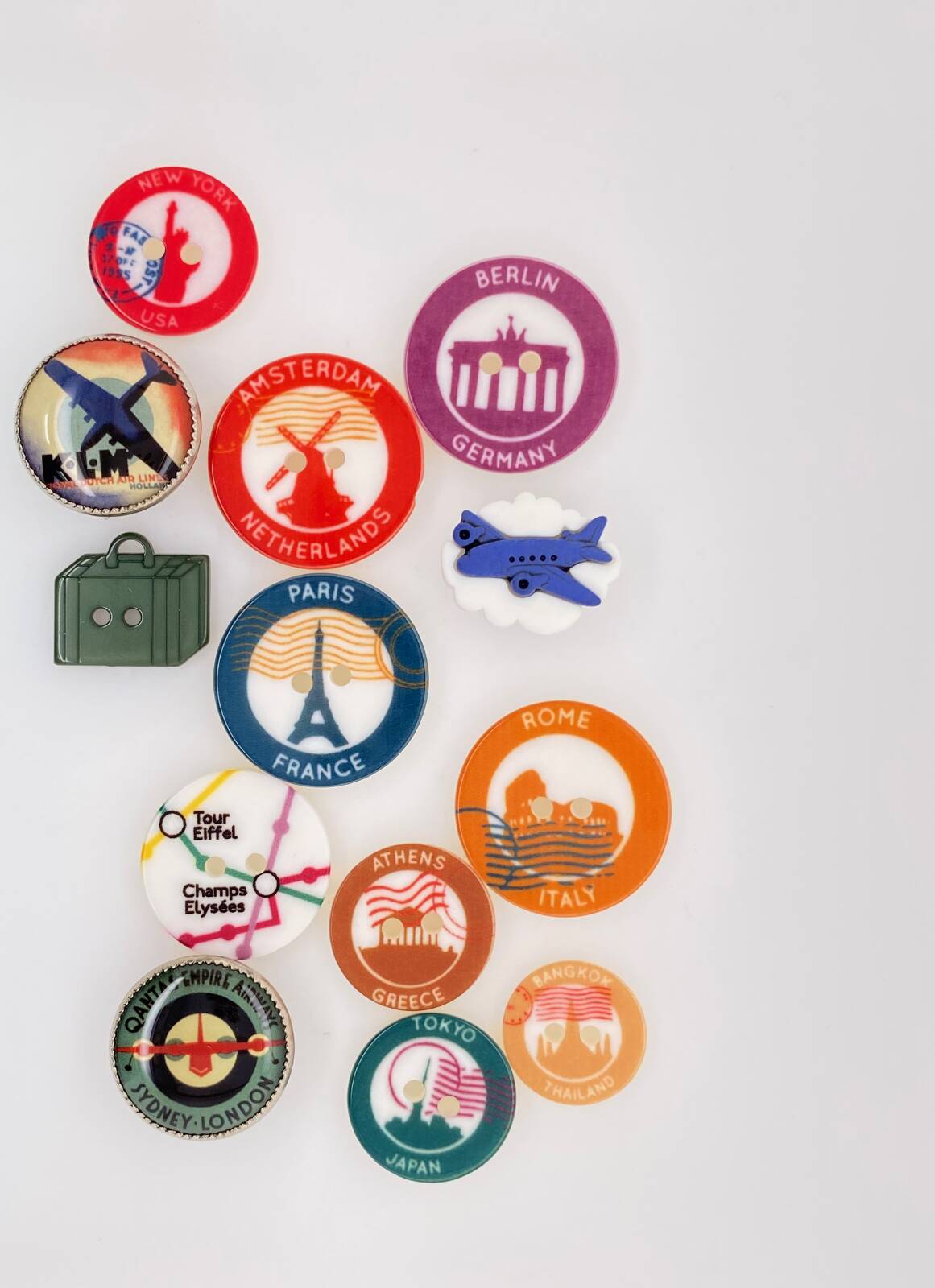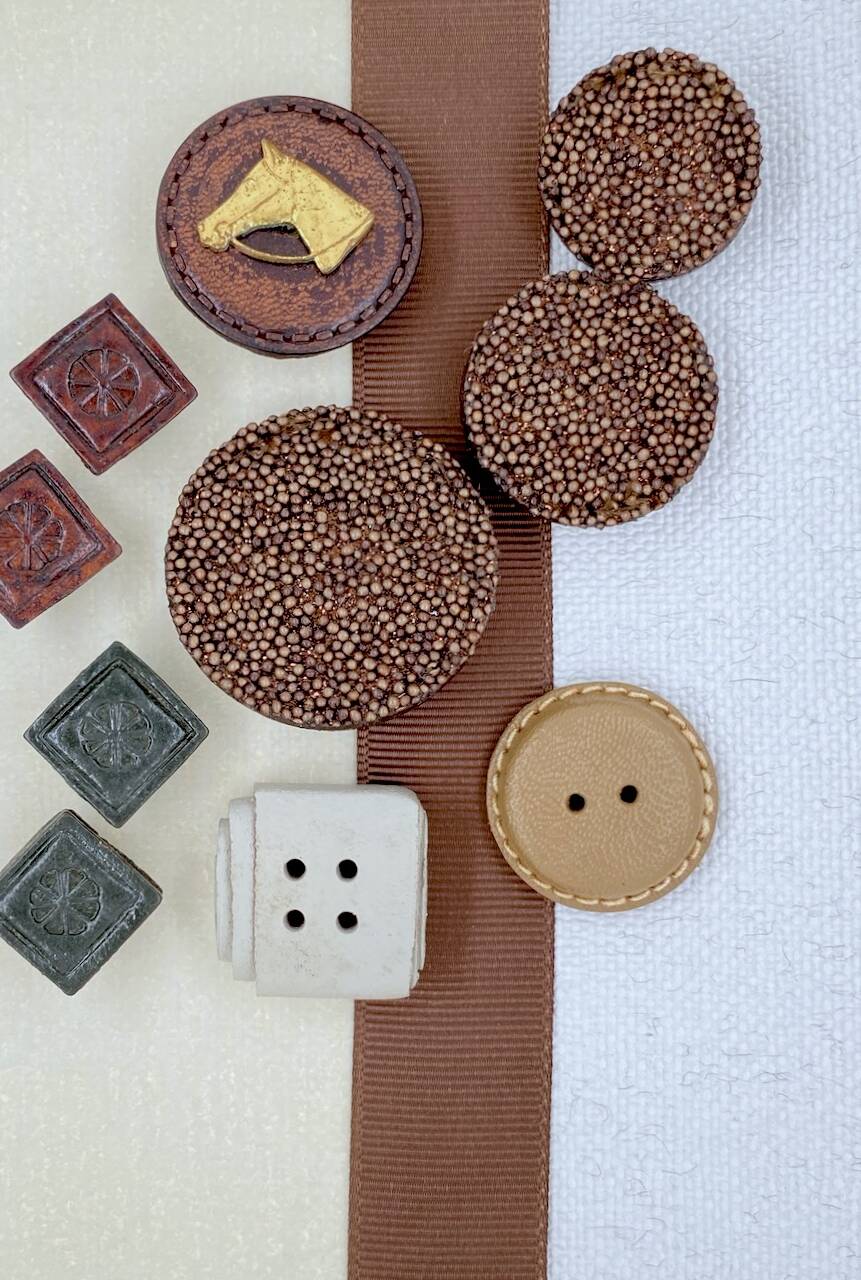It's hard to believe in this instant-gratification, technology-first, fast-fashion world that something so quaint as a button shop not only exists in a major Australian city but has done so for more than three decades, sought out by film-makers, high-end designers and everyday craftspeople.
All Buttons Great and Small has operated for 34 years on Newtown's uber-funky King Street in Sydney's south-west, supplying buttons for everything from a genuine Star Wars costume to a cardigan knitted by a proud grandmother.

Its owner Lucy Godoroja has now gone one step further and released a book of the same name, All Buttons Great and Small.
While she estimates millions of buttons have passed through her hands over the decades, Lucy says she was never a button collector and "unlike many people, I did not discover them poring through my grandmother's button box". Her family were refugees and saving buttons wasn't an option. But Lucy had always been enthralled by buttons, growing up in the "sanctuary" of Canada and then opening her store in Newtown in 1989 after moving to Australia.
She was approached by Exisle Publishing to write the book and found it to be a cathartic experience - a way to have her personal archives of buttons all in one place, catalogued and preserved for future generations, and possibly allowing her to let go of them. One day.

"The only reason I said yes [to the book] was that over the years of selling buttons, we have a lot of vintage buttons, a lot of dead-stock buttons, and when some of my favourite buttons were coming to an end, maybe there was one or two left, I thought, 'If I sell them, that's a piece of history gone and I can't explain it to anybody else'," she said.
"I'm not a button collector. I'm not one of those people who collects buttons in specific genres, but I was collecting them more in terms of historical value and I thought at one point in my life I would possibly collect them together in an exhibition.
"So when the publisher approached me, I thought, 'This is probably why subconsciously I've been saving all these buttons'."
Over the years, Lucy would scour the globe for unusual and beautiful buttons for the shop, with people also bringing in button tins that might have belonged to an aunt or grandmother, believing they were better off with her, than with them. She also built up a loyal clientele over the decades.
"Most of our customers are people who sew or knit or just buy clothes and know that they don't like the buttons so they change them," she said.

All Buttons Great and Small is also a favourite haunt of costumer designers for the ballet or theatre, wardrobe people for films and designers such as Akira Isogawa and Collette Dinnigan.
"When I opened the shop, Peter Carey's Oscar and Lucinda came out and my partner's name is Oscar and, obviously I'm Lucy, and that book is about a glass button factory so when they made the film, they actually came to get buttons for the film from the shop," she said.
"We did all the buttons for Moulin Rouge, we've done the Star Wars ones that are filmed here, the Thor series filmed here."
When the television version of 20,000 Leagues Under the Sea was filmed in Australia in the late 1990s, the wardrobe team flew down from Brisbane to visit Lucy's shop in Sydney to source buttons for a vest worn by the show's leading man, Michael Caine.
"And the wardrobe girl, when they were starting filming, sent me a note saying 'Michael Caine just loves the buttons'," Lucy said, with a laugh. "It was really nice."
Watching Star Wars, the average moviegoer isn't looking at the buttons. But Lucy says they quietly add to the quality of the costume.
"I think with the film and theatre people, especially film because they do close-ups, they do choose some things that are quite exceptional for their main stars and I think it's appreciated."

Lucy's book traces the history of the button from toggle-like objects made from bone or wood or teeth dating back to 6000 BC right through to mass-produced products of today, reflecting the social history as well.
"For me it's all about them being seen and people understanding the history. It's a social history and an industrial history, about manufacturing techniques and also what people wanted," she said.
"Buttons, for instance, in the 16th and 17th century were useful, but also made from precious gemstones and precious metals and kings and queens had them and it was their way of saying, 'I've got all this money and you don't'. And with the industrial revolution and mass production, people who didn't have the money could imitate people who did. You could say buttons were a leveller."
In today's world of fast-fashion, buttons may seem to be on the way out. But Lucy says buttons can be that point of difference to distinguish a quality garment from a quick knock-off.
"They are expensive, it does add a lot of cost to a garment if you put buttons on. And of course as people are getting more casual in their clothing, they're using fabrics that are stretchy so they fit that way rather than using buttons. But I think that there's still very much a love of buttons," she said.
"Two things about fast fashion is that they either use no buttons at all, it's casual clothing, or it's fast fashion that is imitating high fashion.
"So, high-end fashion is still using buttons. It's a bit cyclical. Sometimes it will go from 20 buttons on a garment back down to one or two. At the moment, we're seeing a resurgence in the high-end field, where they're coming back to buttons.
"I also think it's a point of difference where things can be copied easily in other countries, by using really good buttons, if you've got this garment and you've got the really good buttons, you know you've got a quality garment."

Among Lucy's favourite buttons are hand-carved polyester ones from the last 20 or 30 years.
"The Italians are very good at using colour and I just really appreciate that. A lot of the time, I must say, I'll end up with an all-black outfit and sometimes I just want some colour so I'll accent it with some really great buttons, colourful ones, and it just makes me feel good," she said.
And Lucy says people should look after their buttons. She says some from the past are made with the same techniques as jewellery but treated very much like a utilitarian object.
"People expect buttons to be inexpensive and indestructible. But you don't say to people when they buy a pair of earrings, 'Oh, by the way you can throw them in the washing machine and they'll be fine'," she said, with a laugh.
And so what happens to her buttons now the book is finished? Lucy says she may put them on exhibit or donate them to a museum.
"I'm still undecided. I live in a small terrace house so space is at a premium," she said.

Lucy has some sweet connections to Canberra, where she will do a launch of All Buttons Great and Small at the Paperchain book store in Manuka on November 2 at 5pm.
"I've been a member of the National Gallery since I first came to Australia in '84 and when I had children, I didn't know anyone in Canberra, so I used to just go for the day. I used to drag my kids along and they were always, 'Oh we don't want to go'," she said.
"I used to bribe them and say, 'On the way out, we can go to that book store [Paperchain] and get a book'. And years later, both my kids went to ANU, my second one ended up working at Paperchain all the way through her uni. It's a very odd sort of connection there."
Lucy now has a lot of friends in Canberra. And those visits to the National Gallery must have paid off - her daughter Kira, 29, is now a curator at the NGA and her other daughter Zoya, 32, is an artist in Spain.
"So note to self: if you're a parent, drag your kids to a gallery, even if they don't like it, it sticks," Lucy said, with a laugh.
- All Buttons Great and Small is published by Exisle Publishing. RRP $49.99
We've made it a whole lot easier for you to have your say. Our new comment platform requires only one log-in to access articles and to join the discussion on The Canberra Times website. Find out how to register so you can enjoy civil, friendly and engaging discussions. See our moderation policy here.







